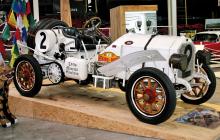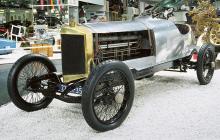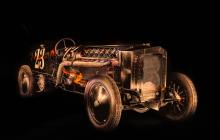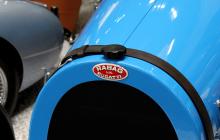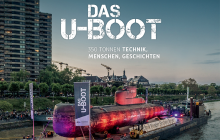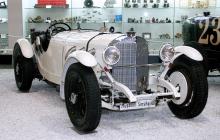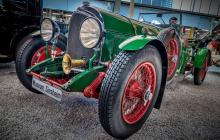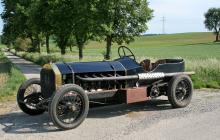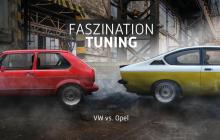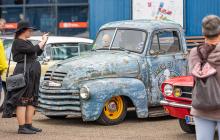American La France spark lightning
The Amercian La France “Funkenblitz“ (spark lightning) originated in 1907. Both his outward appearance and technology are typical for vehicles of that time. The large-volume engine with 9.5 liter displacement has an output of 95 hp. Transmission is brought of by chain drive to the rigid rear axle. The vehicle has no front wheel brakes, but instead a rear external band brake as well as an internal expanding foot brake. A car following behind timed its top speed at 145 km/h.
This interesting vehicle has an eventful past. Subsequent to running at many sports events it served as a fire engine in a small American town and then lapsed into oblivion to be brought back to life after many years. But it passed its greatest test in 1997 on occasion of the Peking to Paris Rallye.
In 1907 five automobile pioneers set out for the first time to race this rallye, a murderous competition even by today‘s standards, that should lead them over a distance of 16,000 km from Peking over the Himalayas and across Asia to Paris. In the following 90 years all attempts to repeat this competition were thwarted. But the political thaw finally brought this dream of countless rallyefans within reach.
It was settled for Hermann Layher, the director of the museum, and five further club members that they were going to take part in this competition. Three teams were formed. Rolf Meyer and Gerrit Geiser were going to participate with a Mercedes 280 SE, Mark Klabin and Jörg Holzwarth with a Landrover, model 1968. Hermann Layer and his co-pilot John Dick choose the old, open American La France, the oldest vehicle in the field of contestants. Following were months of meticulous preparations. The cars were completely overhauled, spare parts had to be made and numerous formalities complied with before the adventure finally could begin.
Apart from some broken valves of the “Funkenblitz“, which could be replaced without delay, the first four days of the Rallye, going over just under 2000 kilometers from Peking to the Himalayan foothills, did not cause any problems at all. But then, climbing to the summits of the world‘s most colossal mountain range, man and machine were put in their place by nature. After 3000 kilometers the Layher/Holzwarth Team was taken out of classification by the attending physician due to hypothermia and sent back to Germany.
But even at this moment of bitter disappointment they did not even consider giving up. Aboard a truck the “Funkenblitz“ was brought back to Peking and from there by freight plane to Istanbul. When this stage of the Rallye was reached by the field, the Layher/Holzwarth team joined them again. Their health had been recovered to a point that permitted them to complete the last 3000 kilometers from Turkey via Greece to Paris. The “Funkenblitz“ also survived the rallye in good shape and can now be viewed at the Technik Museum Sinsheim in the very condition in which it passed the finishing line in Paris.

